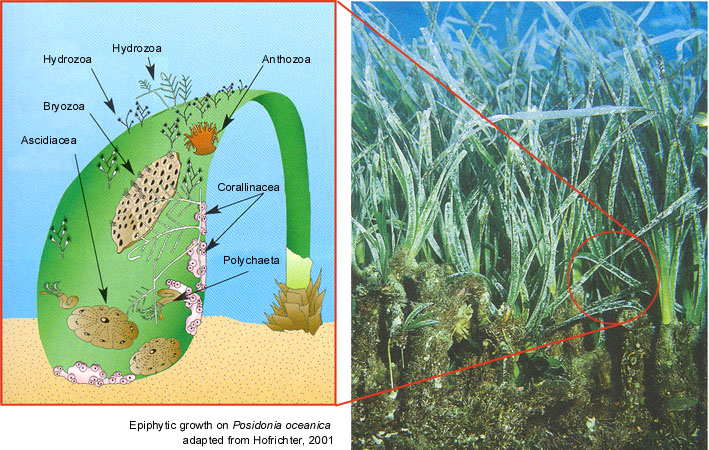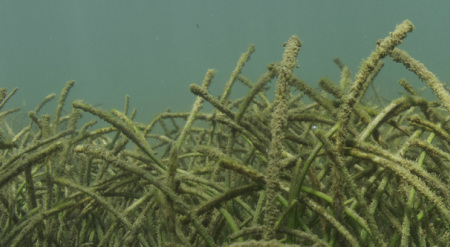So what are marine epiphytes? As in a terrestrial system, they are organisms that live on plants. But unlike a terrestrial system, the "organisms" are not necessarily plants. This seagrass website sums it up well:
"Epiphytes of seagrasses include algae (micro and macro), bacteria, fungi, sponges, bryozoans, ascidians, protozoa, hydroids, crustaceans and mollusks."
Algae epiphytes are common and can densely cover the leaves of plants like seagrass. This is called "biofouling" - probably because it turns the clean, green grasses a bit cloudy and brown. These marine epiphytes are grazed by organisms such as snails and if the balance of host/epiphyte/grazer is not in check, the host plants can be smothered by epiphytes and prevented from photosynthesising.
This all sounds a bit foreign when we compare it to forest systems - I couldn't possibly consider a tree loaded with epiphytes to be "fouled" and we don't consider forest animals to be epiphytes. However, there are also similarities:
- both systems have holoepiphytes and hemiparasites
- epiphytes add to ecosystem biomass and biodiversity
- epiphytes contribute to nutrient cycles and affect light interception
- epiphytes provide an important food source for fauna in either fruit or foliage
- it is often the oldest host or part of a host that has the most epiphytes
It seems that there has been very little comparison of marine and terrestrial epiphytes - I think it could be a very interesting future research direction.




 RSS Feed
RSS Feed
